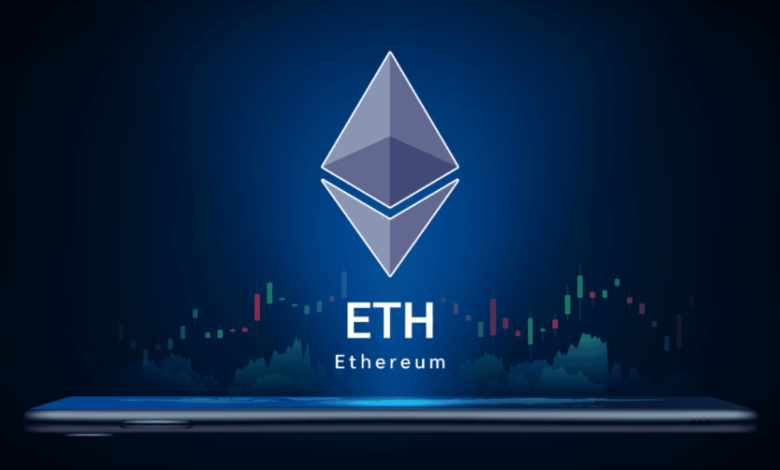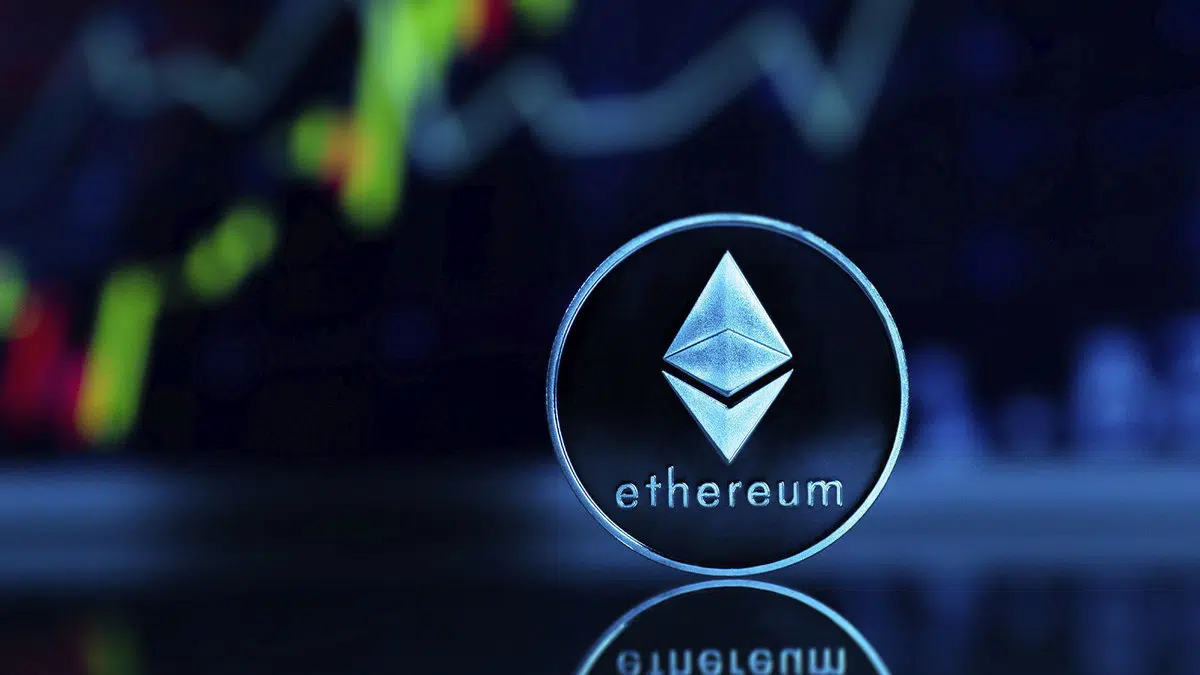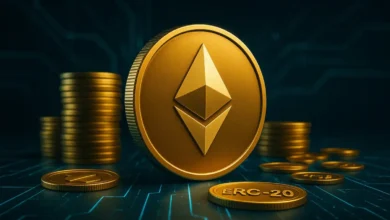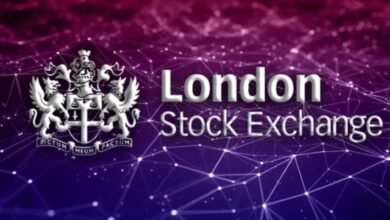
In the crypto market, the top blockchains are experiencing significant growth in total value locked (TVL). As per the data from DefiLlama, the prominent blockchains based on total value locked this week include Ethereum, Solana, Tron, Bitcoin, and so on. Ethereum Leads The well-known DeFi TVL aggregator provided the data of these chains on its official web portal.
Ethereum Takes Top Position
The data from DefiLlama presents Ethereum Leads as the leading blockchain in line with TVL. It has reportedly seen a 7.14% increase in its total value locked during the recent seven days. As a result of this, the platform’s TVL is currently at $68.303B. After this, Solana stands at $12.02B in terms of TVL. This figure accounts for a massive 43.02% spike over the week.
Tron secures 3rd place in DefiLlama’s ranking of chains in terms of TVL. The blockchain’s total value locked has reached $7.237B. This amount denotes a 3.40% weekly upsurge. Subsequently, Bitcoin obtained 4th place among the top blockchains with peak TVL. In this respect, $7.175B is the present TVL level of Bitcoin. This signifies an 11.54% increase over the last week. The next blockchain on this list is Binance Smart Chain, securing 5th spot with a TVL of nearly $5.74B. This points toward a weekly jump of up to 4.20%.
Avalanche Bottoms List with $1.425B
The list moves on to place Sui in 8th place as its TVL is $1.993B due to a 4.08% weekly surge. Additionally, Hyperliquid has shown a 17.68% weekly increase, placing its TVL at $1.699B. Avalanche comes after this with an 8.11% jump, leading the blockchain’s total value locked to nearly $1.425B.
Ethereum (ETH)
Ethereum has been the foundational blockchain for DeFi applications since its inception. Despite facing high gas fees and scalability concerns, Ethereum still dominates the DeFi space with the highest TVL. With major DeFi protocols like MakerDAO, Uniswap, and Aave operating on Ethereum, the network continues attracting retail and institutional capital. Ethereum Leadstransition to a proof-of-stake (PoS) consensus mechanism through Ethereum 2.0 is expected to reduce energy consumption and improve scalability, reinforcing its position as the primary blockchain for DeFi.
Binance Smart Chain (BSC)
Binance Smart Chain has emerged as Ethereum’s biggest competitor in the DeFi space. Launched by Binance, one of the largest cryptocurrency exchanges in the world, BSC offers faster transaction speeds and significantly lower fees than Ethereum, making it attractive for DeFi projects and users. With a thriving ecosystem of decentralized exchanges (DEXs), yield farming protocols and lending platforms, BSC has quickly become a dominant blockchain by TVL.

Avalanche (AVAX)
Avalanche has made significant strides in the DeFi space thanks to its high throughput, low transaction costs, and interoperability with other blockchains. Avalanche’s consensus mechanism, called Avalanche-X, allows for faster and more scalable transaction processing, which is crucial for DeFi applications that require quick settlements and high volumes of transactions.
Solana (SOL)
Solana burst onto the DeFi scene by offering fast, low-cost transactions and a robust ecosystem of decentralized applications. Despite facing network downtimes in 2022, Solana’s high-performance blockchain is a popular choice for DeFi developers looking to build scalable solutions. Solana’s ability to handle thousands of transactions per second (TPS) at minimal costs has made it a go-to blockchain for high-frequency DeFi applications.
Polygon (MATIC)
Polygon is another layer-2 scaling solution for Ethereum that has gained immense popularity. However, Polygon enhances Ethereum’s scalability while maintaining its security by providing faster and cheaper transactions. As a result, several DeFi projects have deployed on Polygon, taking advantage of its low fees and fast confirmation times. Ethereum Leads, Popular platforms such as Aave, QuickSwap, and Sushiswap have migrated to Polygon, significantly growing the network’s TVL.
Fantom (FTM)
Fantom, known for its high throughput and low fees, has become a noteworthy blockchain in the DeFi space. With the ability to process thousands of transactions per second, Fantom provides developers with the infrastructure to build DeFi applications that can handle large-scale adoption. The network’s TVL is largely driven by DeFi protocols such as SpookySwap, Yearn Finance, and Geist Finance. As Fantom continues to scale, its robust ecosystem and developer incentives will likely attract even more projects, further boosting its TVL.
Arbitron (ARB)
Arbitrum is a layer-2 solution built on Ethereum that enhances transaction throughput and lowers fees using optimistic rollups. As one of the leading Ethereum scaling solutions, Arbitrum allows developers to leverage Ethereum’s security while offering users faster and more affordable DeFi transactions. With many DeFi protocols migrating to Arbitrum, including Uniswap V3 and Sushiswap, the blockchain’s TVL has experienced significant growth. As Ethereum continues to scale, Arbitrum’s role in facilitating DeFi on the Ethereum network is expected to increase.
Terra (LUNA)
Despite facing a dramatic collapse in 2022, the Terra blockchain is returning. Terra’s TVL is recovering as new protocols and projects are launched to restore confidence in the network. The revival is primarily driven by the emergence of the Terra 2.0 ecosystem and the continued demand for algorithmic stablecoins like UST. While it remains to be seen whether Terra can regain its former glory, its recovery efforts and the launch of new projects are crucial for its long-term sustainability in the DeFi space.
Tron (TRX)
Tron, known for its high scalability and low transaction fees, has built a solid DeFi presence through various apps and platforms. Tron’s popularity in the DeFi space is fueled by its stablecoin ecosystem and ability to support cross-chain compatibility. Ethereum Leads, DeFi protocols like JustSwap and Sun.io are key contributors to Tron’s growing TVL. The blockchain’s emphasis on high transaction throughput and low-cost operations makes it an attractive option for DeFi users and developers.
Harmony (ONE)
Harmony is a fast, secure, scalable blockchain enabling decentralized applications to operate more efficiently. With its low fees and interoperability with Ethereum and other blockchains, Harmony has seen increased adoption in the DeFi space. Protocols such as SushiSwap, Tranquil Finance, and DeFi Kingdoms drive the growth of the blockchain’s TVL. Harmony’s focus on scalability, combined with the cross-chain interoperability of its ecosystem, positions it as a promising player in the DeFi space.
Summary
The DeFi landscape is diverse and dynamic, with multiple blockchain networks contributing to the growth of decentralized finance. As of this week, Ethereum continues to lead in TVL, but it faces growing competition from chains like Binance Smart Chain, Avalanche, Solana, and others that offer lower fees, faster transactions, and innovative solutions. Ethereum Leads, The increasing adoption of layer-2 scaling solutions and the development of cross-chain interoperability will likely play a significant role in shaping the future of DeFi.
[sp_easyaccordion id=”3354″]







